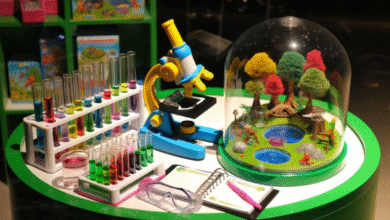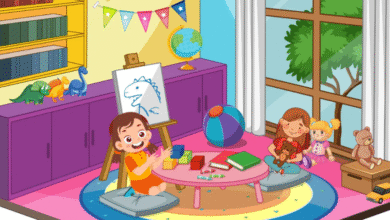Tips for Organizing and Storing Kids Toys at Home

Keeping kids’ toys organized and properly stored can often feel like an uphill battle for many parents. With toys scattered all over the house, clutter can quickly take over, making spaces look chaotic and overwhelming. But with the right tips for organizing and storing kids toys at home, you can create a harmonious environment that benefits both children and adults alike. This article offers practical, easy-to-follow advice to help you maintain a tidy, functional, and safe play area.
Why Organizing Kids’ Toys is Important
Organizing toys is about more than just tidiness—it plays a crucial role in your child’s development and your household’s well-being. When toys are organized, children find it easier to focus on play, fostering creativity and learning. Moreover, a clutter-free home reduces stress and makes cleaning faster for parents. A well-organized toy space also encourages kids to respect their belongings and develop responsibility early on.
See also: The Ultimate Guide to Choosing Safe and Educational Toys for Kids
Assessing Your Space and Toy Inventory
Before diving into storage solutions, assess the space available in your home and the number and types of toys you have. Conducting a toy audit by grouping toys by size, type, and how often they’re used will give you a clear idea of your storage needs. Also, measure your storage areas—closets, playrooms, corners—to plan appropriately sized storage units that fit perfectly without wasting space.
Decluttering Before Organizing
The first essential step is to declutter. Sort toys into three categories: keep, donate, and discard. Be honest about what your child still enjoys and what has been outgrown or forgotten. Also, keep safety in mind—discard broken toys or those with small parts if you have toddlers. Decluttering not only frees up space but also makes the remaining toys more manageable.
Choosing the Right Storage Solutions
Selecting the proper storage containers and furniture is key. Popular options include clear plastic bins, open shelves, baskets, and cabinets. Clear containers allow kids to see what’s inside without rummaging, reducing mess. Consider portable storage for toys kids like to carry around, and fixed storage for larger collections. Also, look for easy-to-access units to encourage children to put toys away themselves.
Utilizing Vertical and Hidden Spaces
Don’t overlook vertical storage options such as wall-mounted shelves or pegboards to hold toys or accessories. These free up floor space and can add a decorative touch to the playroom. Additionally, under-bed storage bins are excellent for maximizing unused space, perfect for board games or puzzles.
Multi-purpose Furniture for Toy Storage
Furniture that doubles as storage offers both function and style. Toy chests with cushioned tops can provide seating, while storage ottomans keep toys out of sight and offer a cozy spot for kids or adults. These smart solutions help keep toys tidy without sacrificing living space.
Organizing Toys by Category and Frequency
Organize toys by their type—such as dolls, cars, or blocks—and frequency of use. Keep favorite or everyday toys in easy-to-reach places, while storing seasonal or rarely used toys higher up or out of direct sight. Another helpful method is rotating toys: pack some away and swap them periodically to renew your child’s interest and reduce the total toys out at once.
Teaching Kids to Help with Toy Organization
Getting children involved in toy cleanup is essential for fostering responsibility. Turn tidying up into a game or challenge, rewarding them for putting toys away correctly. Use colorful labels or pictures on bins to help pre-readers identify where each toy belongs, making cleanup easier and more fun.
Maintaining a Toy Organization System
Consistency is the secret to long-term success. Establish daily habits like a quick 10-minute toy pickup before meals or bedtime. Also, conduct seasonal toy reviews to reassess and declutter. This keeps the toy collection fresh and manageable throughout the year.
Safety Tips for Toy Storage
Safety should never be compromised. Avoid storing small toys where toddlers can reach them to prevent choking hazards. Secure tall shelves and heavy storage units to walls to prevent tipping. Also, ensure all storage bins and furniture have smooth edges and lids with safety locks if necessary.
Budget-Friendly Toy Storage Solutions
Organizing toys doesn’t have to break the bank. DIY projects like repurposing old crates or using inexpensive fabric bins can be highly effective. Look for affordable storage solutions at discount stores or online, and consider multi-use items that serve other purposes besides storage.
Digital Tools and Apps for Toy Management
Technology can assist toy organization too. Various apps allow parents to catalog toys, track gifts, and schedule rotations or donations. Setting reminders can help maintain a regular cleaning and sorting routine, making organization less of a chore.
Eco-Friendly Approaches to Toy Storage
Choose sustainable storage materials like bamboo baskets or recycled plastic bins. Also, be mindful about donating or recycling toys instead of throwing them away. Teaching kids about eco-friendly habits related to their toys can instill valuable lessons on sustainability.
FAQs about Organizing and Storing Kids Toys
Q1: How often should toys be decluttered?
Decluttering every few months or at least seasonally keeps the toy collection manageable and safe.
Q2: What are the best storage options for small spaces?
Vertical shelving, under-bed bins, and multi-purpose furniture maximize small areas efficiently.
Q3: How can I encourage kids to tidy up regularly?
Make cleanup fun through games, charts, or small rewards to motivate participation.
Q4: Should toys be organized by type or size?
Organizing by type usually works best to help kids find and store toys easily.
Q5: Are clear bins better than opaque ones?
Clear bins help kids see contents quickly, reducing mess during toy searches.
Q6: How do I safely store toys for different age groups?
Keep small parts away from young children and secure large furniture to prevent accidents.
Conclusion: Keeping Toy Organization Fun and Sustainable
Organizing and storing kids’ toys at home is a manageable task with the right strategies. It promotes a calm, clutter-free environment where kids can thrive and parents can relax. By decluttering, selecting the right storage solutions, involving your children, and maintaining the system consistently, toy organization can become a positive family habit. Remember, it’s not just about tidiness—it’s about creating a joyful, safe space for play and growth.


